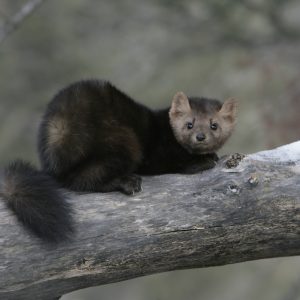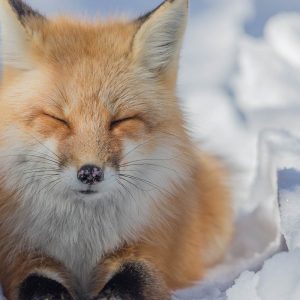5 Facts About Grizzly Bears to Bear in Mind
How much do you know about the Grizzly Bear? Here are 5 facts about the mammal you may not have known!
Grizzly Bear Description
Common name: Grizzly Bear
Scientific name: Ursus arctos horribilis
Habitat: Grizzlies are adaptable and their habitat ranges from dense forests to subalpine meadows, open plains and arctic tundra.
Lifespan: 20 to 30 years in the wild
Size: height between 1.5 and 2.5 m; weight between 100 and 270 kg
Description: Grizzlies are typically dark brown, though their fur can range from light cream to black and is often white tipped. They have concave faces, a hump on their back, and long claws.
Fact 1: The Grizzly Bear’s scientific name translates to “horrible northern bear” or “terrifying northern bear.”
“Grizzly” also resembles the word “grisly,” meaning horrifying. However, the name more likely comes from the word “grizzled” which refers to hair streaked with gray, much like the Grizzly’s white-tipped fur.
Fact 2: Grizzly Bears can hibernate up to 7 months; talk about a long nap!
Before you ask; bears don’t eat, defecate, or urinate during this time.
Fact 3: Grizzly Bears are slow reproducing land mammals.
Female Grizzlies first reproduce when they reach 5 to 8 years of age. The mating season is between May and July, though the female’s body delays implantation until November or December. At that time, implantation only happens if she has enough body fat to carry her pregnancy through hibernation. Including this delay, the gestation period lasts 6 to 9 months.
Litters can have up to 4 cubs, though they are usually of 2 or 3. Mothers stay with their cubs for about 3 years, avoiding male Grizzlies during this time. As a result, females only reproduce every 3 to 5 years.
Fact 4: The best approach to bear safety? Avoid bears.
This may seem intuitive but the safest way to interact with a bear, for both you and the bear, is to avoid doing so. Here are some tips for camping in bear territory:
- Make noise. Clap, sing or talk loudly—bear bells are not enough. Let bears know you are there, they would rather avoid you, too!
- Keep campsites free of attractants
- Stick to official trails
- Watch for bear signs—tracks, droppings, torn-up logs or disturbed rocks—and leave the area if fresh signs are found
- Travel in large groups
- Keep dogs on a leash—or at home
- Leave any area in which you find a large dead animal—and alert the site staff
Before going into bear territory, it is always best to read up on bear safety.
Fact 5: Destruction of habitats is the main threat to Grizzly Bear survival, followed by highway and railroad mortalities.
Individuals can help protect bears by simply giving them their space. Bear habitats are considered secure when bears can go about their business with low risk of human-related disturbances. Campers and wilderness explorers should avoid disturbing the environment, and should respect official trails and signage.
You can also help by contributing to Grizzly Bear habitat protection initiatives, and through your ongoing and valued support to the many conservation initiatives of Nature Canada. To learn more, check out our endangered species profile about Grizzly Bears.
Acknowledgements: Parks Canada and Defenders of Wildlife



